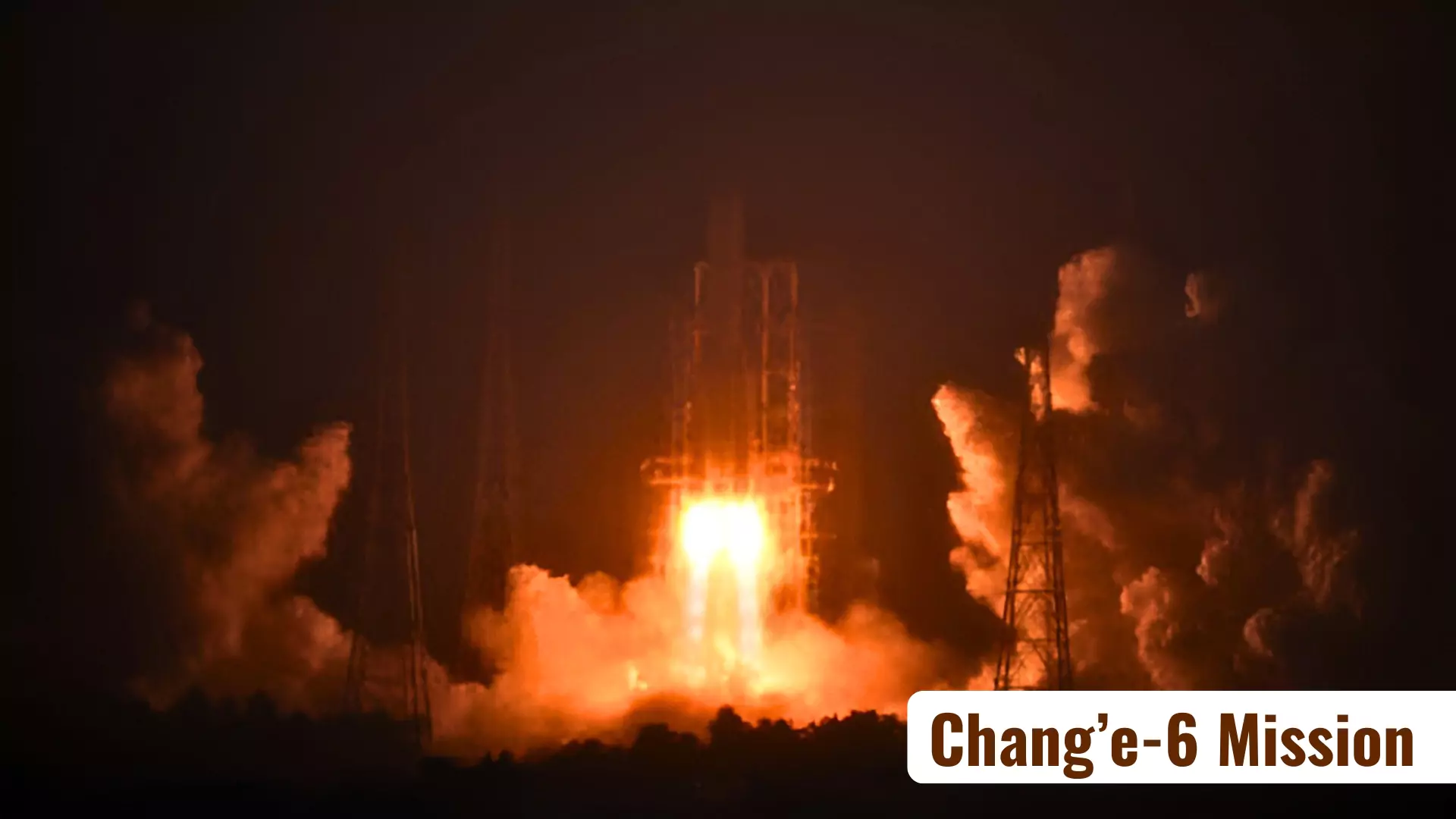Context
China launched its second mission to the far side of the Moon. If successful, it will be the world’s first mission to bring back samples from the far side of the Moon.
- China’s Exclusive Far Side Moon Exploration: China is the only country to achieve a soft-landing on the far side of the Moon.
- In 2019, its Chang’e-4 mission landed on the region and explored the Moon’s Von Karman crater with the help of a rover.
Chang’e-6 Mission

Chang’e-6 mission is a 53-day-long mission. After reaching the Moon’s orbit, the mission’s orbiter will circle the natural satellite while its lander will descend into the 2,500-kilometer-wide South Pole-Aitken basin on the lunar surface.
- Sample Collection: After collecting samples through scooping and drilling, the lander will launch an ascent vehicle, which will transfer the samples to the orbiter’s service module.
- This module will then return to the Earth.
- Significance: The impact that formed the basin is believed to have excavated material from the lunar mantle. If scientists can retrieve this material, they can gain valuable insights into the Moon’s internal history.
Enroll now for UPSC Online Course
Significance of the Far Side of the Moon
The Moon’s far side is often referred to as the dark side because it cannot be seen from the Earth. Due to tidal locking with Earth, only one side of the Moon, known as the near side, is observable from our planet.
- Objective: To land on the far side of the moon, collect up to 2000 grams of lunar material, and return to Earth, marking a first-of-its-kind mission.
- Features: It features a thicker crust, an abundance of craters, and a scarcity of maria, which are the plains formed by ancient lava flows.
- Significance: Free from exposure to Earth and other interference, the moon’s far side is ideal for radio astronomy and other scientific work.
- Insights into Lunar Origins: Examining the samples from the far side can help scientists solve mysteries about the origin and evolution of the Moon.
- Till now, scientists have only been able to analyze samples from the near side.
Moon Mission of India/Chandrayaan-4 Mission
Chandrayaan-4 is the first step towards achieving the goal of India landing an astronaut on the moon in 2040.
- Objective: It will collect samples and bring it back to Earth demonstrating the full cycle of going to the moon and coming back to Earth.
- Difference with Chang’e 6 Mission: While Chang’e 6 mission aims to bring back samples from the Moon’s far side, India’s Chandrayaan 4 mission is being built to bring samples from the Moon’s south pole region. It is expected to be launched in 2027
Also Read: ISRO Pushpak Viman: Reusable Launch Vehicle (RLV)
![]() 6 May 2024
6 May 2024
